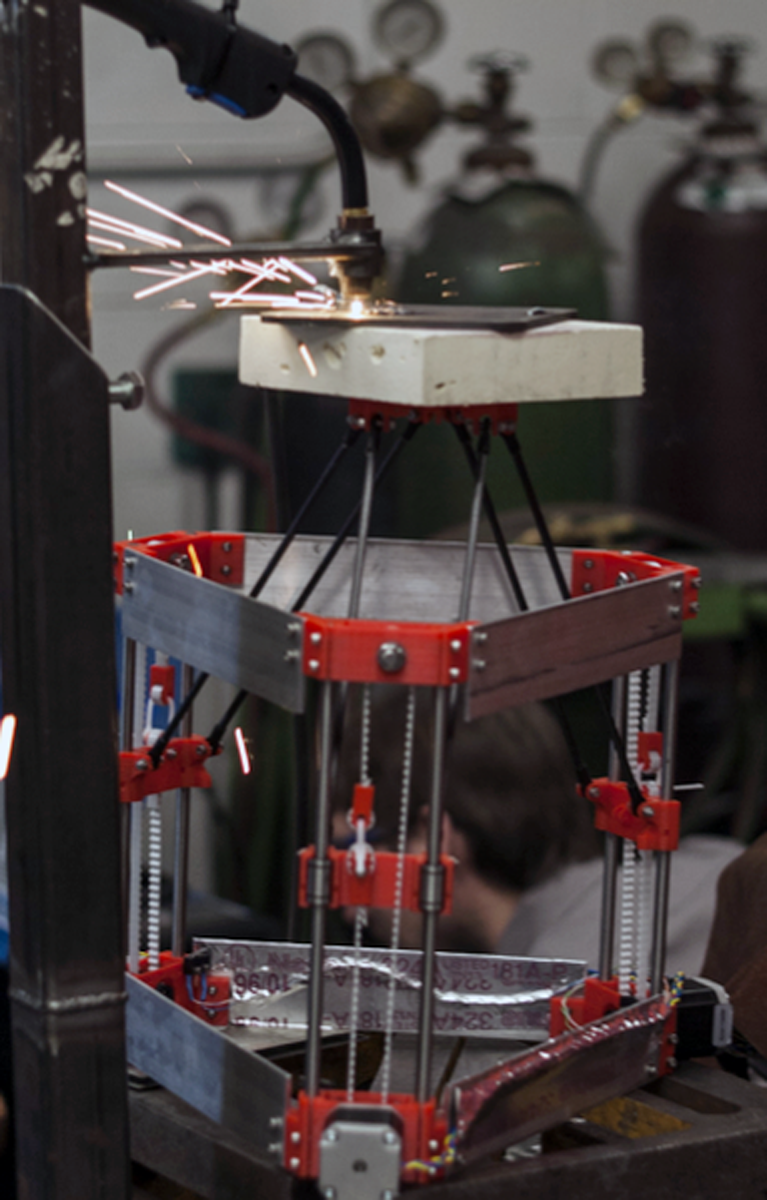In 2013, the lab of Prof. Joshua Pearce at Michigan Tech had designed an open source metal 3D printer that could be assembled for less than $2,000. The lab is still working hard on their technology and, today, published a breakthrough that could be applicable to metal 3D printing as a whole and, more importantly, reduces the cost of metal 3D printing with their system even further.
Typically, metal 3D printing requires the use of a metal substrate, onto which the part is fabricated. Then, during post-processing, this substrate is removed and usually destroyed in the process. Pearce’s lab is after a low-cost, open source metal 3D printing process, but the study’s authors explain that this substrate removal practice is a costly one, further limiting the technology to those with financial resources, “Expensive, energy intensive, and time-consuming methods are then needed to remove metal 3-D printed parts from the substrates such as wire electrical discharge machining (EDM). As a result, additive manufacturing with metal is largely isolated to large corporations possessing the means to equip and maintain these expensive facilities.”

All of these methods worked to reduce the attachment of the final print to its metal substrate, with the prints removed from the bed using a Charpy impact tester to measure the amount of force necessary. They were even able to remove prints more easily without any of these agents at all! The authors write, “No-cost methods were also developed that eliminate the need for coatings: manipulation of first layer weld settings and aluminum-iron compound formation. Print settings, such as printing without shield gas and using alternate weld unit settings for the first layer, were developed to limit weld penetration into the substrate and to encourage in situ formation of release agents such as oxides. Encouraging the formation of aluminum-iron compounds allowed aluminum specimens to be removed from steel substrates with the lowest impact energy. These mechanisms allowed the steel and aluminum specimens to be removed from the substrate without the use of cutting tools.”
By reducing the need for post-processing, with respect to substrate removal, and the need to replace the printbed with every go, the authors believe that low-cost metal 3D printing could be a viable option for classrooms and laboratories, where it could even be used to produce lab equipment. Also, it goes without saying that this reduces the amount of waste associated with such a process. While it may work with Michigan Tech’s own arc-welding technology, which may make it applicable to other welding processes like Norsk Titanium or Sciaky’s metal printing, the researchers say that there’s more work to be done to know for sure if these same strategies will work with other metal printing technologies. For small and medium businesses, as well as brave Makers, however, knowing that it works with Michigan Tech’s low-cost, open source metal printer may be enough for them to adopt the technology themselves.
You can read the study yourself at this link here. For more on Michigan Tech’s metal 3D printer, watch the video below. Or, to build your own, check out the Appropedia page on the subject.



